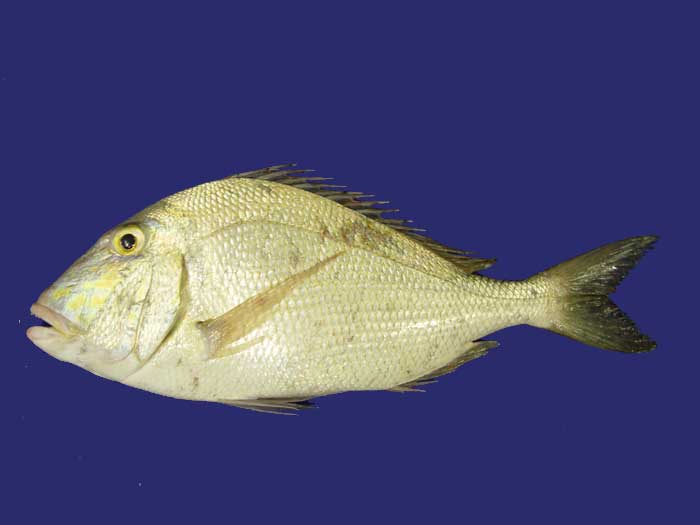Calamus calamus (SEFSC Pascagoula Laboratory; Collection of Brandi Noble, NOAA/NMFS/SEFSC ) Cladus: Eukaryota Vernacular names The saucereye porgy, Calamus calamus, is an ocean-going species of fish in the family Sparidae. In Bermuda, they are also known as the goat's head porgy.[1] In Jamaica, they are known as the Porgi grunt and the sugareye porgy. They may also be known simply by the name Porgy in several other Caribbean islands. Saucereye porgies are considered to be minor gamefishes and when caught are marketed both fresh and frozen.[2] Taxonomy and naming The Saucereye porgy was first described by the French zoologist, Achille Valenciennes in a 22-volume work entitled Histoire naturelle des poissons (Natural History of Fishes), which was a collaboration with fellow zoologist, Georges Cuvier.[3] It was first described as Pagellus calamus, being placed in the genus Pagellus. It was since moved into Calamus, a genus named for the mythological Calamus, or Kalamos. It was so named because the Calamus of myth allowed himself to drown in a river, after the death of his lover, and transform into aquatic plants[4] that young saucereye porgies make their homes in. Description Saucereye porgies can grow up to 56 cm in length,[5] but normally they are 30 to 45 cm long.[6][7] Though some sources state that they can weigh up to 3 lbs,[8] the largest record is only half that: 1.5 lbs.[9] The cheek area is blue with yellow spots; there is also a dark blue smudge behind the upper gill opening.[10] Distribution and habitat Saucereyes are found only in the western Atlantic ocean—from North Carolina, east to Bermuda, and south to Brazil.[11] They are most common around the cities of Key West and Havana. Adults are commonly found around coral reefs, where they are easily approached by divers,[12] while juveniles are common to beds of sea grass (mainly Thalassia). Saucereyes feed on a variety of animals, such as mollusks, sea worms, brittle stars, hermit crabs, crabs and sea urchins.[11] References 1. ^ Zaneveld, J.S. 1983 Caribbean Fish Life. Index to the local and scientific names of the marine fishes and fishlike invertebrates of the Caribbean area (Tropical Western Central Atlantic Ocean) E.J. Brill / Dr. W. Backhuys, Leiden, 163p.
Source: Wikispecies, Wikipedia: All text is available under the terms of the GNU Free Documentation License |
|

